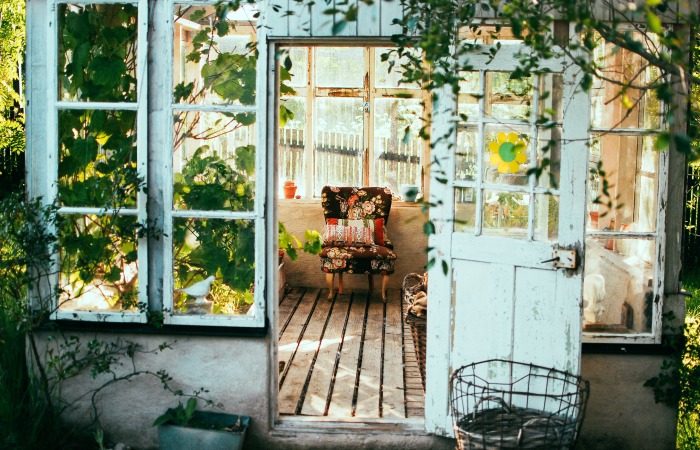The Challenge: Our living environment can greatly impact our mood.
The Science: We can make specific living space choices that boost our happiness.
The Solution: Try these 6 tips to make your home a place you can feel at home in!
There’s no greater feeling than walking through the front door of your home after a long day. However, did you know that how your home looks and feels can impact your mood?
Here are six ways that your living space affects your happiness. The good news is that all of them are actionable tips so that you can make the change in order to feel a change. We’ve all heard of de-cluttering, but here are some lesser-known tips to make your home a happier place.
1. Change the Lighting
A poorly lit living space is not going to make you eager to spend time in it. In fact, lighting has an incredible effect on our moods: remember how you feel on the first sunny day of spring post-April showers? The rays of sunlight can make you feel more optimistic if you’re naturally inclined to optimism.
Brighter lighting tends to heighten emotions, so good, bright lighting should intensify the way you feel about being home — happy. Natural light is also a valuable tool in the fight for happiness, so crack open your blinds and curtains to let that seep in, too. Live in a dark apartment? Get one of those lamps that mimics the sun’s rays.
2. Go for Curves Over Hard Edges
The arm of your armchair or the edge of your nightstand might seem unimportant in the grand scheme of your décor. Research shows that our primal fear of sharp objects — imagine navigating a dark cave lined with pointy rocks — steps in when we’re surrounded by big, angular objects.
Make sure that the big pieces in your rooms have softer curved edges to promote a sense of well-being and happiness. If replacing your big-ticket items isn’t currently in the budget, add elements of softness to make it feel less rigid. For example, a rectangular sofa will look much less edgy with plush fur pillows and a similarly soft throw.
3. Change the Paint
Have you ever been to a stark white doctor’s office? How did that color make you feel? It’s not likely to drum up warm and welcoming feelings; instead, you probably feel uncomfortable, sterile, and cold.
Color can have incredible effects on your mood, which is why you should be conscious of the shades painted on your walls. The bathroom, for example, should take on a soothing hue so that you, too, can feel soothed while you bathe; the same goes for the bedroom, where catching Z’s is the main priority. Match your goal for a specific room to the color that tends to generate that feeling.
If you live in a rented space where painting is out of the question, try incorporating the right color through movable items: art, throw pillows, blankets, curtains, rugs — the list goes on.
4. Make It Personal
A bare living space with no personal mementos?! Your happiness level says, “No thanks.” Instead, make your home speak to you with items that, well, speak to you: a few personal photos, pieces of art that mean something to you or make you feel a certain way, books that you love to fill the shelves… no matter what it is, make sure that your design pieces and knickknacks speak to who you are — you’ll feel more grounded at home with a tether to your most beloved memories.
5. Add Some Plants
A home without plants might be a happy one, but a home with plants is definitely a happy one. In fact, greenery can affect everything from your mood to your blood pressure to your anxiety post-surgery. Perhaps it feels good to have something to care for, or a healthy green plant makes everything look better — either way, plants only positively affect their owners.
If you find yourself loving your new indoor garden, extend it to your office or workplace so that you can maintain home-level happiness throughout the work day — they’ll have a similar effect on you there, too, as they break up the starkness and sameness of the space.
6. Change How You Think About Your Home
For some, the apartment or house in which they live is just that: a place to go for sleep, showers, and some meals between a busy schedule. Thinking about your abode as a crash pad won’t do much to improve the way that you feel when you get there.
You can inspire a real change in attitude by simply considering your house, your home. No matter what state it’s in now, start to shift the way you refer to and think about your place. It’s not a place to crash — it’s where you rest and refresh. It’s not a place to prep lunches for the work week — it’s a dining room where you can serve friends.
Some of the above tips might help you change the way you see your home, too. And, by the end of your quest to feel happier at home, your space will probably feel a bit more homey. Altogether, that should help you change the way you see it — and the way you feel when you’re there.



